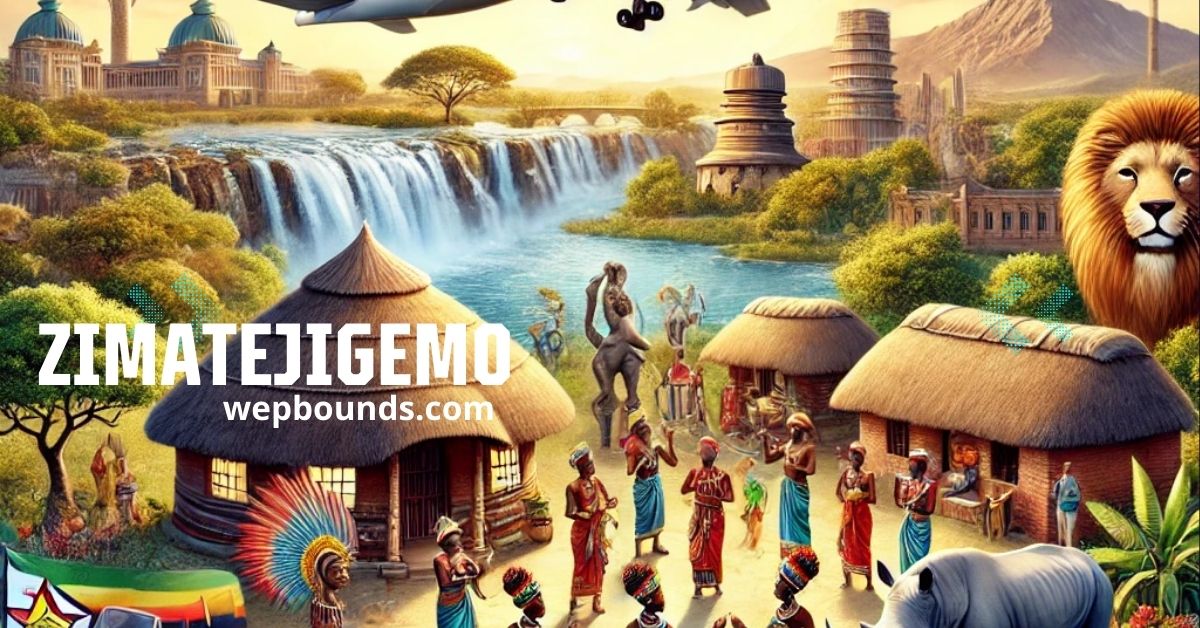Zimbabwe, a landlocked country in Southeast Africa, is often recognized for its stunning landscapes, vibrant cultures, and rich history. Despite its tumultuous past, the country continues to hold immense potential for growth and development. Zimatejigemo, a term that embodies the essence of Zimbabwe’s journey, refers to both the resilience and evolving identity of the country. This article dives deep into the heart of Zimbabwe, exploring its culture, challenges, and untapped potential that could drive the nation toward a promising future.
Understanding the Essence of Zimatejigemo
At its core, “zimatejigemo” can be interpreted as the spirit of Zimbabwe—its challenges, triumphs, and future aspirations. While the term itself may not be widely known, it perfectly encapsulates the country’s resilience in the face of adversity. Over the decades, Zimbabwe has undergone numerous political, economic, and social upheavals, but it remains a country with rich cultural traditions, scenic landscapes, and a growing potential for innovation and development.
The Historical Context of Zimatejigemo
The history of Zimbabwe is complex, shaped by colonialism, resistance, and independence. Before British colonization, Zimbabwe was home to several advanced civilizations, including the Great Zimbabwe Kingdom, which was known for its impressive stone structures, most notably the Great Zimbabwe ruins. These ruins stand as a testament to the ingenuity and resourcefulness of the people who built them, symbolizing the strength of Zimbabwe’s indigenous culture.
Following colonization, Zimbabwe faced decades of struggle for independence. The liberation movement, led by figures like Robert Mugabe, eventually culminated in the country gaining independence from Britain in 1980. This marked the beginning of a new chapter, one filled with hope for a brighter future. However, Zimbabwe’s post-independence history has been fraught with challenges, including hyperinflation, political unrest, and economic stagnation. Yet, the spirit of “zimatejigemo” endures, as the people continue to fight for progress despite these obstacles.

The Role of Culture in Shaping Zimatejigemo
Zimbabwe’s rich cultural heritage is at the heart of its identity. From its traditional music and dance to its art and cuisine, the country’s cultural expression plays a pivotal role in the lives of its people. The concept of “zimatejigemo” is deeply intertwined with Zimbabwe’s cultural legacy, where each generation adds to the story of resilience and hope.
Music and Dance: The Soul of Zimbabwe
Music and dance are central to Zimbabwean culture. The mbira, a traditional thumb piano, is one of the most iconic instruments in the country. It’s often used in spiritual ceremonies, but it also serves as a medium for storytelling and community bonding. In addition to the mbira, other instruments like drums and marimbas are integral to the rhythm of daily life.
Traditional dances, such as the Jerusarema and Mbende, are performed during celebrations and rituals. These dances are not only an expression of joy but also a means of preserving the rich cultural traditions of the Shona and Ndebele peoples.
Art: A Reflection of Struggles and Triumphs
Zimbabwe’s art scene is another manifestation of its vibrant culture. From the stone sculptures of the Shona people to the contemporary works of urban artists, Zimbabwean art reflects the country’s history of struggle and survival. In particular, Zimbabwean stone sculpture gained international recognition in the 1960s and continues to be a powerful form of artistic expression.
Artists in Zimbabwe are known for using their work to explore themes of identity, politics, and social justice. The unique blend of traditional techniques and modern styles creates a rich tapestry of artistic innovation.
Also Read: Zoderzinxcrose: Uses, Properties, and Future Potential of This Unique C
Cuisine: A Taste of Zimbabwe
The cuisine of Zimbabwe is as diverse as its people. Traditional dishes often feature maize, rice, millet, and sorghum, accompanied by vegetables, meats, and legumes. Sadza, a type of maize porridge, is the staple food of Zimbabweans, and it is often served with vegetables, stews, or meat dishes.
The blending of indigenous ingredients with influences from colonial times has led to a unique culinary tradition. Foods like nyama choma (grilled meat), boiled peanuts, and mopane worms (a local delicacy) add to the rich food culture, reflecting both the country’s history and modern innovations.
The Economic Landscape of Zimatejigemo
Zimbabwe’s economy has faced significant challenges over the years, but it also shows great potential for growth. Hyperinflation, the collapse of industries, and political instability have historically hindered the country’s economic progress. However, with the right reforms, Zimbabwe could emerge as a thriving economic hub in Africa.
Agriculture: A Cornerstone of Zimbabwe’s Economy
Agriculture has long been the backbone of Zimbabwe’s economy, with crops like tobacco, maize, and cotton playing a key role in both local and international markets. Despite challenges such as droughts, land reform policies, and mismanagement, agriculture remains an area of great potential.
The government has made strides in encouraging sustainable agricultural practices and promoting agribusiness. With fertile land and favorable climates, Zimbabwe has the potential to become a leading exporter of agricultural products in the region.
Mining: Rich in Natural Resources
Zimbabwe is rich in natural resources, particularly in minerals like gold, diamonds, and platinum. The mining industry has historically been a significant contributor to the nation’s economy. However, the sector has also faced challenges, including corruption and lack of investment.
In recent years, the government has made efforts to attract foreign investment into the mining sector. Zimbabwe’s vast mineral wealth, combined with its low-cost labor force, could make it an attractive destination for investors looking to tap into the global demand for precious metals and minerals.
Tourism: Capitalizing on Natural Beauty
Zimbabwe is home to some of the most stunning natural landscapes in the world. Victoria Falls, one of the Seven Natural Wonders of the World, draws tourists from all over the globe. The country’s national parks, such as Hwange and Matobo, offer opportunities for eco-tourism, safaris, and wildlife conservation efforts.
In addition to its natural beauty, Zimbabwe is rich in history and culture, offering visitors the chance to explore ancient ruins, colonial architecture, and vibrant urban centers. As global interest in sustainable tourism grows, Zimbabwe has the potential to tap into this market, attracting more tourists and boosting the economy.
Also Read: Johpoizdes: A Deep Dive Into the Future of Blockchain
Political Landscape and the Road to Stability
Zimbabwe’s political landscape has been tumultuous, with years of authoritarian rule under Robert Mugabe and political instability that led to widespread protests and economic decline. However, in recent years, there have been signs of change. The 2017 coup that led to Mugabe’s ousting marked a new chapter in the country’s political history.
Under the leadership of President Emmerson Mnangagwa, the government has promised reforms aimed at restoring economic stability and encouraging foreign investment. However, political challenges remain, and the path to stability will require transparent governance, accountability, and inclusivity.
The Future of Zimatejigemo: A Nation on the Rise
Despite the challenges Zimbabwe faces, the spirit of “zimatejigemo” continues to drive the nation forward. The country’s rich cultural heritage, vast natural resources, and growing potential in sectors like agriculture, mining, and tourism make it a nation of untapped promise.
With the right leadership and commitment to reform, Zimbabwe could unlock its full potential and become a regional economic powerhouse. The resilience of its people, coupled with efforts to modernize infrastructure and promote innovation, will play a crucial role in shaping the future of Zimbabwe.
Also Read: Tokehizzus: Everything You Need to Know
FAQs about Zimatejigemo and Zimbabwe
What does the term “zimatejigemo” mean?
Zimatejigemo refers to the essence of Zimbabwe—its resilience, struggles, and aspirations. It symbolizes the country’s ongoing journey of growth and transformation.
What are the key industries driving Zimbabwe’s economy?
Agriculture, mining, and tourism are the primary industries driving Zimbabwe’s economy. The country is rich in natural resources and has the potential to capitalize on its agricultural and tourism sectors.
What is the significance of Victoria Falls to Zimbabwe?
Victoria Falls is one of the Seven Natural Wonders of the World and a major tourist attraction in Zimbabwe. It draws visitors from across the globe and plays a vital role in the country’s tourism industry.
How has Zimbabwe’s political landscape evolved in recent years?
Zimbabwe has experienced political instability under Robert Mugabe’s regime, but recent leadership changes have brought hopes for reform and economic recovery. The government has promised measures to restore stability and attract investment.
Can Zimbabwe overcome its economic challenges?
While Zimbabwe faces significant economic challenges, it has vast potential in sectors like agriculture, mining, and tourism. With the right reforms and investment, the country could become a thriving economic hub.
What role does culture play in Zimbabwe’s identity?
Culture is central to Zimbabwe’s identity, with music, dance, art, and cuisine reflecting the country’s rich heritage. These cultural expressions help preserve Zimbabwe’s history while shaping its modern identity.
Conclusion: Embracing the Spirit of Zimatejigemo
Zimbabwe’s journey is one of resilience, transformation, and untapped potential. Through its rich cultural heritage, beautiful landscapes, and growing sectors, the country has the potential to overcome its challenges and emerge as a global player. The spirit of “zimatejigemo” embodies the strength, hope, and ambition of the Zimbabwean people—a testament to the nation’s enduring belief in a brighter future.
As Zimbabwe continues on its path toward growth and stability, the world will be watching closely, ready to embrace the emerging opportunities this landlocked gem has to offer.







Leave a Reply